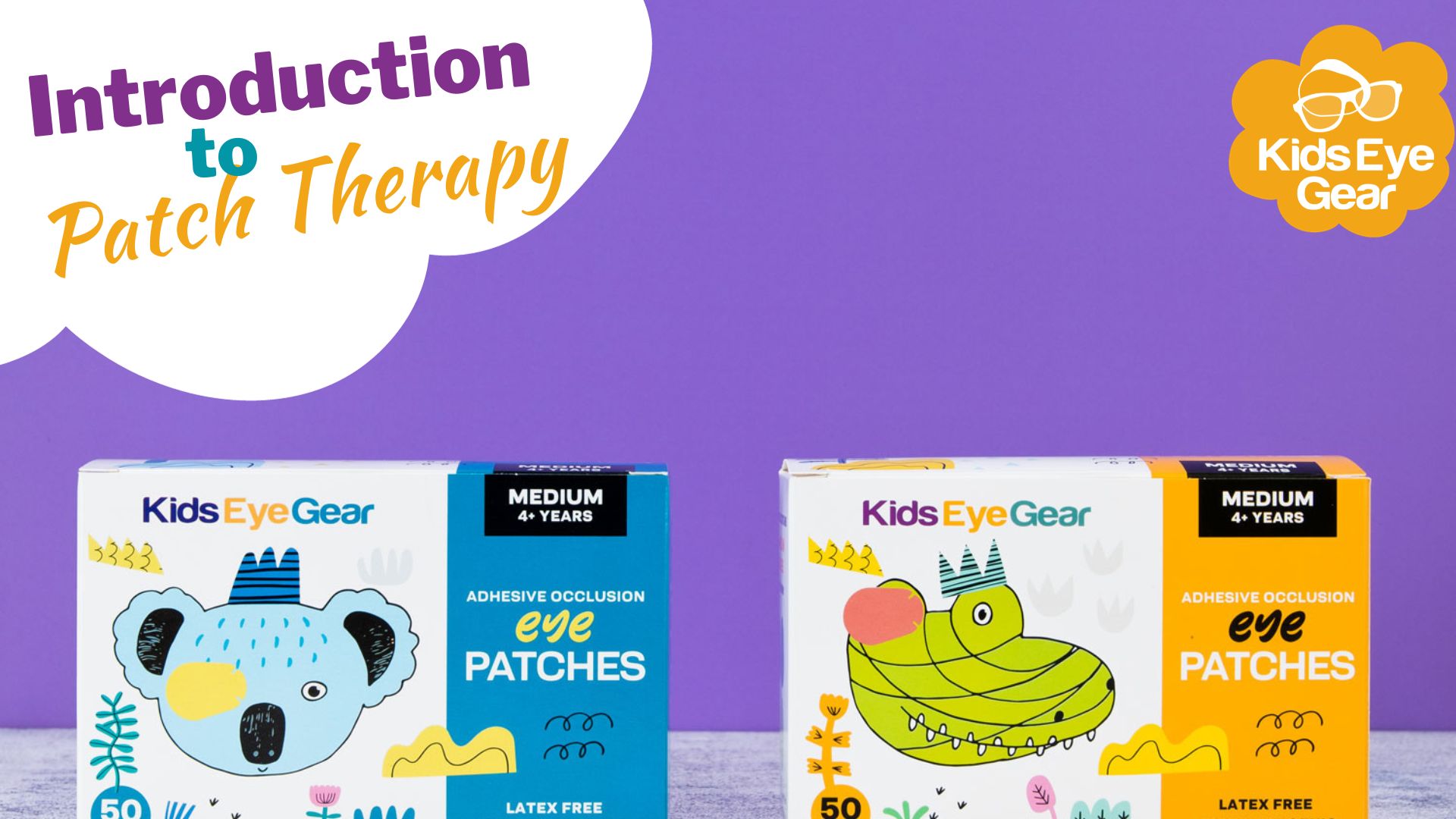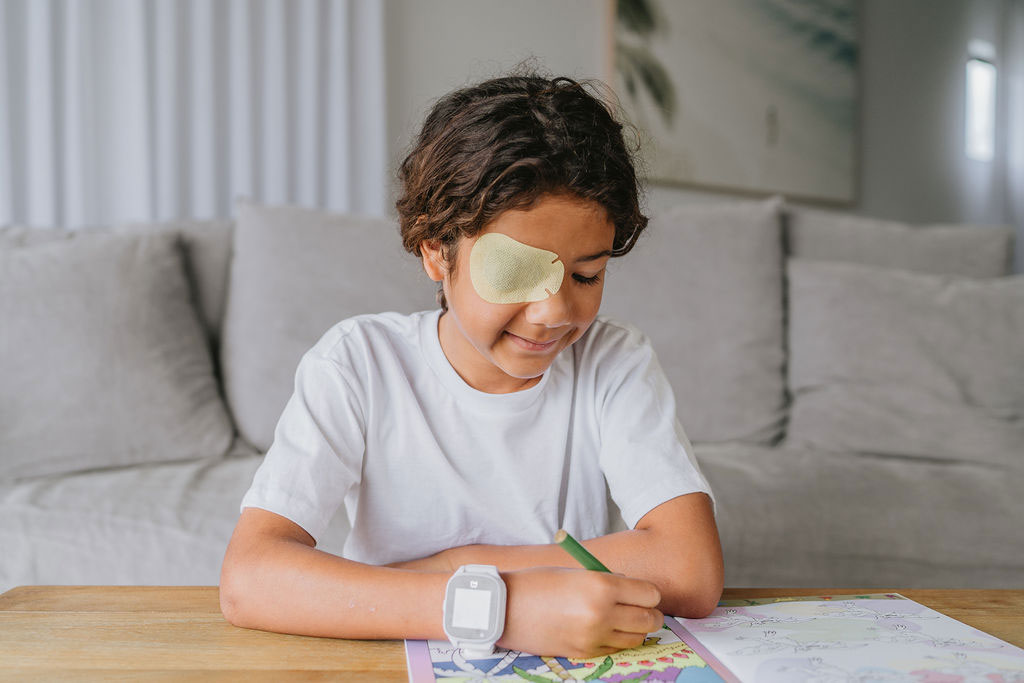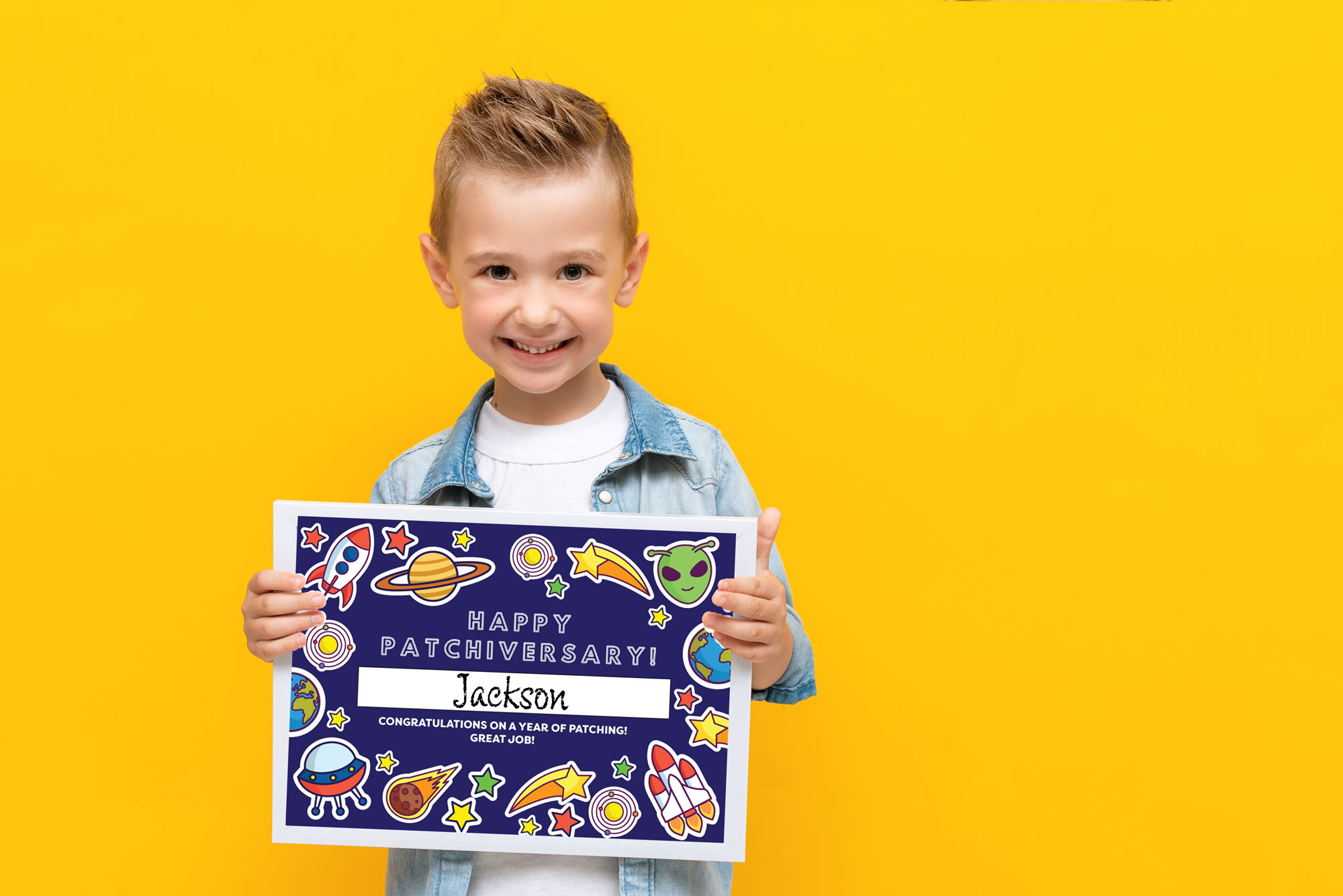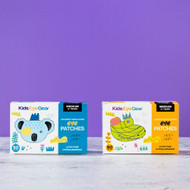An Introduction to Patch Therapy: A Parent's Guide
15th Oct 2023

It's a moment no parent anticipates - learning your child has a vision problem. And then, when patching is suggested as treatment, a whirlwind of emotions may arise: worry, confusion, and fear.
Will my child be ok?
How will this affect their future?
Is this the best treatment available, and will it work?
Let me reassure you now - from a professional viewpoint as well as our family's lived experience, that although such thoughts are common after a recent diagnosis, with the right tools, support and mindset, you can lead your child towards a brighter vision future, one patch at a time.
Understanding the Diagnosis
Coming to terms with a child's newly diagnosed vision issue means entering a world of medical terms, numerous specialist appointments and then weathering the emotional turmoil of seeing your little one struggle.
The initial thing to grapple with is the diagnosis. Whether it's Amblyopia (lazy eye), Strabismus (crossed eyes), or another vision issue, knowing what you're dealing with is the first step. Ask your eye specialist as many questions as you need, do some research, and connect with other parents because knowledge is empowering.
The Importance of Patching
Patching is a widely recommended and super important treatment for addressing common vision issues in children. Quite simply, it works by giving a boost to the weaker eye by covering the stronger one, and this helps the weaker eye improve over time.
But patching is more than just a simple bandage – it's a pathway to better vision for your child, and embracing the therapy with consistency and diligence can really improve your child's eyesight and overall eye health.
Initiating the Patching Journey
Starting with patching is a big step, and there are a few things to remember. First, it's important to find a patch that fits your child comfortably. This could mean trying out different sizes or styles to ensure optimal fit and effectiveness. Once you've found the best patch, establishing a regular schedule for wearing it is crucial.
To maximise the benefits of treatment, sticking with the recommended protocol will be essential. Getting your child to comply will most likely mean you'll need to regularly check they are comfortable as well as offering them ongoing support and encouragement.

Making Patching Fun
Turning therapy into a positive experience will really help your child through this journey, so make patching fun by integrating it into their daily activities.
Perhaps the patch can be part of a superhero costume or a magical tool that gives them special powers. Select one of our designs or use stickers or markers to decorate the patch, making it visually appealing. Incorporating storytimes or games that your child enjoys while they're wearing their patch can also help reduce resistance.
Remember, your attitude towards patching will significantly influence your child's perspective, so keep it positive.
Connecting with Others
Engage with other parents and join online support groups - their help can be a godsend during this journey as you can share experiences, seek advice, and receive reassurance from those who are there too… or who have come out the other side.
One of the best sources of comfort and encouragement can be the stories of others' successes. Not only will you feel less alone, but you'll also get practical tips and strategies that have worked for other families.
Celebrating Milestones
Every little step calls for a celebration. Acknowledging both small and significant milestones can keep morale high and encourage your child's participation in patching. Perhaps after a successful patch session, you and your child can share a reward for the team effort. Honouring progress builds motivation and also reinforces the importance of the therapy.

Addressing Setbacks
Patching isn't an overnight fix and requires commitment and patience from you and your child. But while setbacks can occur, try to see them as just small road bumps, not dead ends. Handle them positively and keep moving forward. Because the end goal is good vision and a healthy eye, the journey there will be worth it.
Professional Support
Regular consultations with healthcare professionals are crucial. They'll be able to provide expert insight into your child's progress and necessary adjustments in treatment. Be bold and ask questions, request clarification or seek a second opinion if needed.
Remember, you are your child's best advocate and with the right team supporting you, better visual health can be achieved.
It Will Be OK, Promise
Hand on heart, I feel what you're going through.
Our son's diagnosis was the catalyst for the launch of Kids Eye Gear, and I've learnt so much about vision therapy and patching since then, knowledge that I'm excited to share with other parents.
Yes, it's a tough road, but it’s one that will lead your child towards new visual horizons that may not have been possible without this treatment. So, take it one day at a time, know you aren't alone in this and remember - there will be a bright light at the end of the tunnel.

